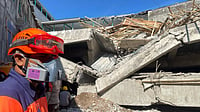
Over 55% of 100,904 cases before JJBs remain pending, with wide state-level disparities.
One in four JJBs functions without a full bench, and 30% lack legal services clinics.
IJR flags weak oversight, poor data systems and limited transparency across states.
More than 50,000 children in conflict with the law remain caught in a sluggish justice system where over half the cases before Juvenile Justice Boards (JJBs) are yet to be resolved, according to PTI. A new India Justice Report (IJR) study released on Thursday shows that ten years after the Juvenile Justice Act came into force, key gaps in staffing, infrastructure and basic oversight continue to stall fair and timely hearings for young offenders.
The report — Juvenile Justice and Children in Conflict with the Law: A Study of Capacity at the Frontlines — notes that as of 31 October 2023, JJBs were handling 100,904 cases, with 55 per cent still pending. Odisha carried the highest pendency at 83 per cent, while Karnataka recorded the lowest at 35 per cent. The findings, PTI reported, come at a time when 40,036 juveniles were apprehended in 31,365 cases under the IPC and special laws in 2023, with three-fourths of them aged between 16 and 18, according to Crime in India data.
Although 92 per cent of India’s 765 districts have constituted JJBs, the study points out that one in four boards is functioning without a complete bench. On average, each board had a backlog of 154 cases. Despite a decade of decentralised juvenile justice mechanisms, systemic weaknesses continue to hinder rehabilitation and support for children, PTI reported.
Key deficits in services were also flagged. Thirty per cent of JJBs do not have an attached legal services clinic, and 14 states along with Jammu and Kashmir do not have places of safety for children above 18. Oversight of Child Care Institutions (CCIs) remains poor — across 166 homes in these states, only 810 of the mandated 1,992 inspections were carried out. Data received from 292 districts further show that only 40 child care homes exist exclusively for girls.
The study highlights the absence of any national, publicly accessible data system for juvenile justice. With no equivalent of the National Judicial Data Grid for JJBs, the IJR team filed more than 250 RTI applications to gather basic information. Of the 500-plus replies from 28 states and two Union Territories, 11 per cent were rejected, 24 per cent saw no response, 29 per cent were transferred, and only 36 per cent contained usable data — a pattern that the researchers say reflects weak transparency and irregular information flow.
Calling the findings a warning sign, Maja Daruwala, chief editor of the India Justice Report, said the current system relies on a consistent supply of information from authorities. But the effort to obtain data showed that “authorised oversight bodies neither receive it routinely nor insist on it. Scattered and irregular data makes supervision episodic and accountability hollow,” she said.
(With inputs from PTI)


























